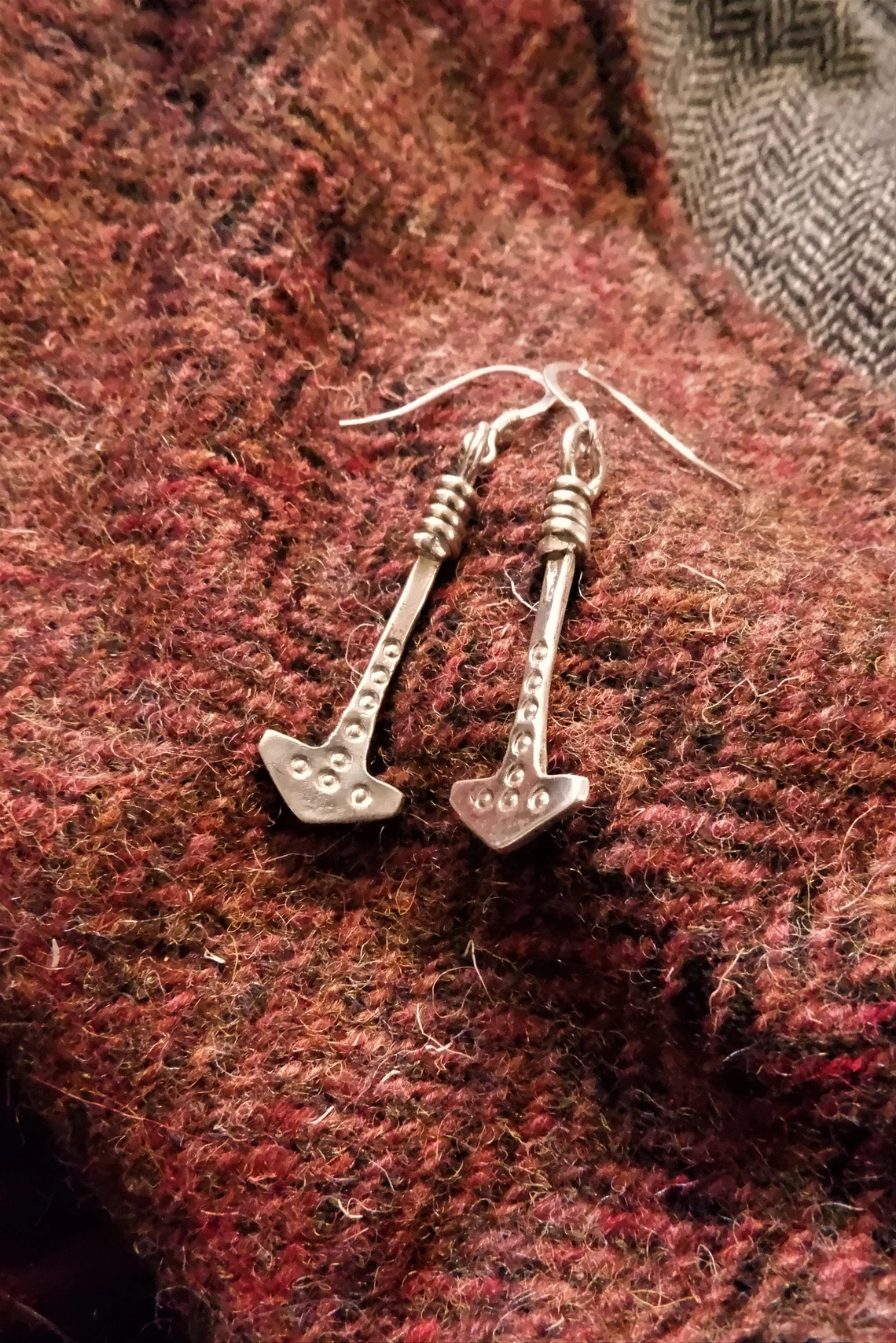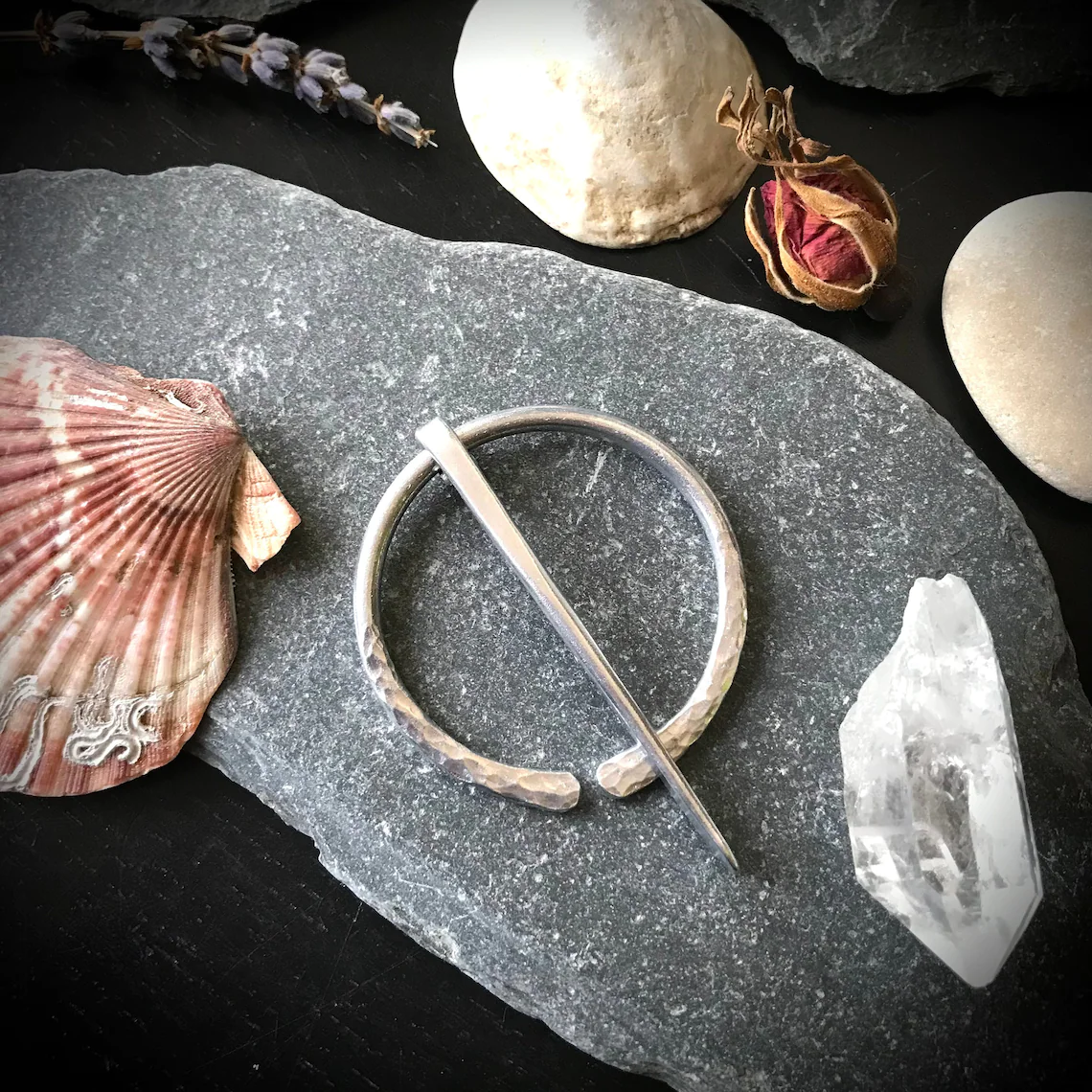
Table of Contents
In the fascinating world of Anglo-Saxon jewelry, each piece tells a story of power, status, and the exceptional skills of ancient craftsmen. More than just decoration, this jewelry served as a marker of identity and influence.
Let’s explore everything there is to know about Anglo-Saxon jewelry, including its history, the various types and where to buy it.
History of Anglo-Saxon Jewelry

Understanding Anglo-Saxon jewelry starts with understanding Anglo-Saxon culture and heritage. What makes both of them so special is just how multifaceted and diverse they are.
Officially, the Anglo-Saxon period of English history lasted between 410 AD and 1066 AD. That’s because it was in the early 5th century that various Germanic tribes migrated from Europe into the British Isles, pushing away the remnants of the Roman Empire and mixing with the native Britons and Celts.
The biggest of these many Germanic tribes were the Angles, Saxons, Frisians, Franks, and Jutes. Once on the island, these tribes didn’t just conquer and settle, however – instead, they intermixed both between themselves and with the local population.
This isn’t to say that there weren’t plenty of conflicts between them, but through all that mixing, a new ethnic identity was eventually born – the Anglo-Saxon – a merger of the cultures, traditions, and crafts of the various Germanic tribes together with the native Britons and the other scattered remnants of the Roman Empire.

Together, this new and diverse ethnic group picked up the pieces left by the Romans and created the first true Kingdom of England. In so doing, the Anglo-Saxons lasted for centuries up until the mid-11th century when new European arrivals – the Normans, Bretons, Flemish, and French troops alongside Willian the Conqueror as part of his Norman Conquest. What’s more, that invasion coincided with another – that of King Harald Hardrada of Norway in northern England.
Several famous battles later, including the famous Battle of Hastings between William and Harald, William the Conqueror became the next king of England. This invasion didn’t come out of the blue, however, as William had an actual claim to the Anglo-Saxon throne.
… and why is this important?
Because, even though the Anglo-Saxon kingdom had fallen and even though the island was suddenly awash with new arrivals, the Anglo-Saxon ethnicity nor their culture remained and thrived.
They remained fairly separate (and rebellious) as an underclass in this new Norman kingdom of England until Normans and Anglo-Saxons eventually and slowly started intermixing during and after the 12th century. In that sense, the diverse and multi-cultural Anglo-Saxons and many of their traditions lived on even after the fall of their kingdom.
What are the Characteristics of Anglo-Saxon Jewelry?

As people with such varied and multicultural history – and future – the jewelry made and worn by Anglo-Saxons reflected their diverse heritage.
Most Anglo-Saxon jewelry was made out of expertly-crafted gold, silver, brass, and bronze, as the Anglo-Saxons were especially renowned for their goldsmithing abilities and artistry. Once crafted, the gorgeous metal pieces were adorned with gemstones native to Britain such as amethyst and amber, as well as with beautiful and colorful glass beads.
The motifs of Anglo-Saxon jewelry also varied a lot – some jewelry designs were inspired by the Germanic roots of the Anglo-Saxons, others – by the captivating mythology of the Brittons.
Once Christianity came to England’s shores in the 6th century AD, a lot of Anglo-Saxon jewelry designs started moving away from paganism and toward Christian symbols and images such as crosses, the Christian fish symbol, and prayer bead necklaces.
Types of Anglo-Saxon Jewelry

Anglo-Saxon jewelry came in a lot of types, shapes, and forms, many of which went on to become the norm in later periods of the English jewelry scene.
Rings were especially popular – both with gems and solid metal bands with various engravings on them – as they were for the ancient Germanic and British tribes that formed the Anglo-Saxons. Necklaces, pendants, and beads were also common both among the nobility and the common folk.

Earrings of various types and designs were also popular, especially in the later centuries of the Anglo-Saxon period. Earring designs varied greatly, however – from whole gemstones suspended on a hook to small golden Christian crosses and various complex metal plus gemstone designs.

Cloak pins and brooches were similarly widespread, especially for men who used them to both keep their cloaks on their shoulders and to display their status in society.
Circular metal shield-like designs could often be seen for pendants and brooches with either gemstone, colorful glass, or intricate engravings in the metal displaying a house’s emblem, a religious symbol, or something similar.
Where to Buy Anglo-Saxon Jewelry Today?
Authentic Anglo-Saxon jewelry can still be seen in many museums and collections across England but contemporary Anglo-Saxon-inspired jewelry is much easier to find.
Not only are there lots of brick-and-mortar jewelry stores across Britain that sell historically-inspired jewelry but there are also lots of online vendors that also have such pieces in different price ranges.
We recommend searching on Etsy as a starting point for Anglo-Saxon jewelry.
Fun Facts about Anglo-Saxon Jewelry
- Anglo-Saxons believed garnets could guarantee a safe return from travel.
- Their jewelers mastered filigree, weaving tiny beads and threads into elaborate designs.
- Brooches often had hidden spaces for keeping relics, amulets, or even poison.
- Some brooches had loops and hinges, suggesting they were part of a mix-and-match jewelry system.
- Jewelers placed gold foil under gemstones to make them look bigger and brighter.
- Anglo-Saxons melted down Roman jewelry to craft new pieces, merging different cultural styles.
- They produced multicolored glass beads, demonstrating advanced glass-making skills.
- Items like saucer brooches signaled high social rank.
- Works like “Beowulf” mention Anglo-Saxon jewelry, emphasizing its role in rewarding courage.
- Their jewelry blended Christian and pagan symbols during a period of religious change.
Wrapping up
The Anglo-Saxon period has some of the most interesting events and developments in English history and the same can be said about Anglo-Saxon jewelry and its many different inspirations, motifs, types, and designs.
The great craftsmanship and variety of Anglo-Saxon went on to transform into even more extravagant jewelry types later on in English history but the charm of the classic Anglo-Saxon jewelry style continued to captivate people to this day, hence why historic reproductions of it are made and sold so often online.









